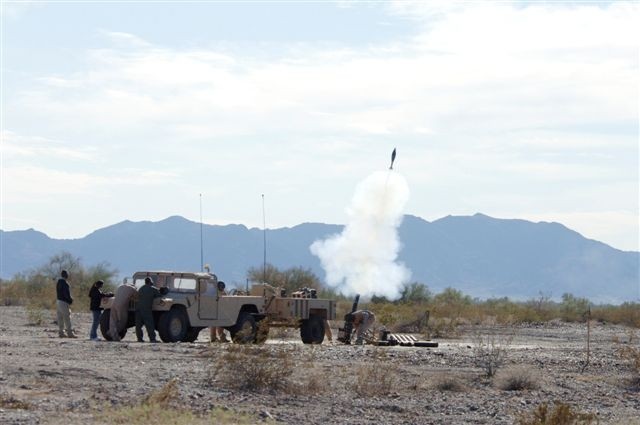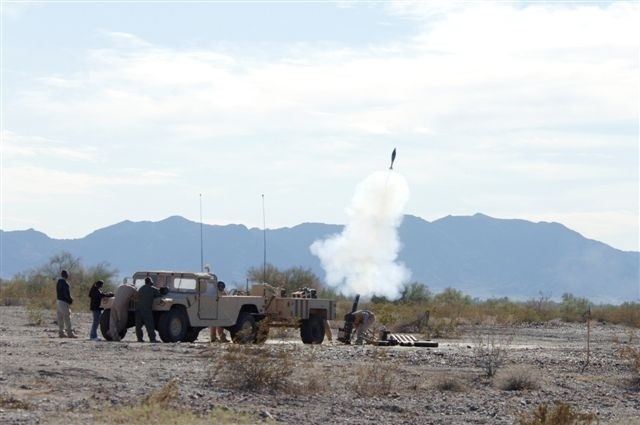
PICATINNY ARSENAL, N.J. - A Picatinny weapons-development team was recently awarded the prestigious "Top Five Department of Defense Program Award" for its work on the 120 mm Dismounted Mortar Fire Control System, or MFCS-D, during the National Defense Industrial Association's Systems Engineering Conference in San Diego Oct. 23.
The award is given to technology programs that best exemplify system-engineering and program-management principles, practices and results.
The programs recognized are considered models for meeting cost, schedule and performance requirements.
During the ceremony, Gordon M. Kranz, director of the Systems and Software Engineering for the Office of the Secretary of Defense for Acquisition, Technology and Logistics, presented the award to representatives of the MFCS-D development team.
The MFCS-D is a new fire control system that will be integrated into the 120 mm mortar to make the weapon fire more easily and accurately, said Ron Tatusch, Dismounted Mortar System team lead.
It combines a highly accurate weapon-pointing device, inertial navigation and position system and digital-communications capability, all embedded in the fire-control computer.
The MFCS-D will make the weapon system three times more accurate and allow mortar crews to send and receive digital call-for-fire messages, calculate ballistic solutions, determine the position of the gun and accurately point the weapon.
It also will provide a link to other digital fire-control network assets and allow the gun to operate as a fire direction center, which will allow the mortar section to execute dispersed operations, he explained.
All these advantages increase the survivability and responsiveness for towed 120 mm mortars on the future battlefield, Tatusch said.
Tatusch said the success of the program results from the employment of well-defined, proven processes to develop, manage and integrate the MFCS-D hardware and software with the dismounted 120 mm mortar system.
ARDEC's in-house software development and system integration was executed through an empowered integrated-product-team approach, he said.
In less than two years, the integrated product team took the program from an idea concept to "Type Classification Standard" in August 2008. Type classification signifies the successful transition of a weapon system's research-and-development efforts into production. The IPT is comprised of Product Manager for Mortars and ARDEC employees as well as other government and contractor workers.
Using tools such as Capability Maturity Model Integrated Level 5 software development processes for software quality enhancement, user verification and validation, and stress testing, the MFCS-D and other current software-intensive system developments undertaken at ARDEC are providing Soldiers critically needed, well-engineered and well-tested products developed in a short amount of time.
The Top 5 program award was created in 2004. Since its creation, Armament Research, Development and Engineering Center's Fire Control Systems and Technology Directorate teams have won the award three times.
Previous winners include the M32 Lightweight Handheld Mortar Ballistic Computer and the M152 Portable Excalibur Fire Control System.

Social Sharing